Samsung Galaxy S 5 Review
by Anand Lal Shimpi & Joshua Ho on April 8, 2014 12:00 AM EST- Posted in
- Smartphones
- Samsung
- Mobile
- Galaxy S 5
Display
As the smartphone market continues to mature, the distinguishing between smartphones becomes harder and harder as OEMs continue to converge in platform and in most other aspects. This is most evident when looking at the progression from the Galaxy S2 generation to today. Back then, the Galaxy S2 was notable because of its Exynos 4210 SoC, which was far ahead of Qualcomm’s dual core Scorpion solutions at the time, which meant non-Samsung OEMs had notably worse CPU and GPU performance. The same was also true for the original Galaxy S with its Hummingbird SoC. Today, just about every OEM ships the same SoC. The difference between 8974AB and 8974AC is effectively only an eight percent CPU bump for the AC variant.
One of the key differentiators now in the market is display. The Galaxy S 5 features a 5.1-inch 1080p Full HD Super AMOLED display, equipped with the usual set of software defined color profiles. The GS5 gets a new adaptive profile that automatically adjusts the tint of the display according to the color of the ambient light. It's a neat effect, however Samsung's Cinema mode still ends up being the most accurate.
As always, we measure color accuracy using Spectracal’s CalMAN 5 software and a custom workflow for smartphones and tablets.
The results show that the Galaxy S5 has a display that is dramatically improved from the Galaxy S4. However, the Galaxy S line doesn’t exist in a vacuum, so it’s important to also look at how it compares against the best LCDs in other phones. In this department, things aren’t quite as perfect. To start, the color gamut control is still rather poor even on Cinema mode, as effectively all of the secondary colors miss the sRGB targets for saturation sweep. Yellow, cyan secondaries and green primaries are also notably out of the sRGB gamut triangle. While recent headlines have raved about the Galaxy S5’s record-setting color accuracy, I don’t see this at all in the results. Still, against the competition in the Android space, Samsung has improved a tremendous amount while other OEMs seem to be stagnating or even regressing in color accuracy. The only Android OEM that actually beats Samsung in the color accuracy department is now Google, which is strange because they contract out their hardware to other Android OEMs.
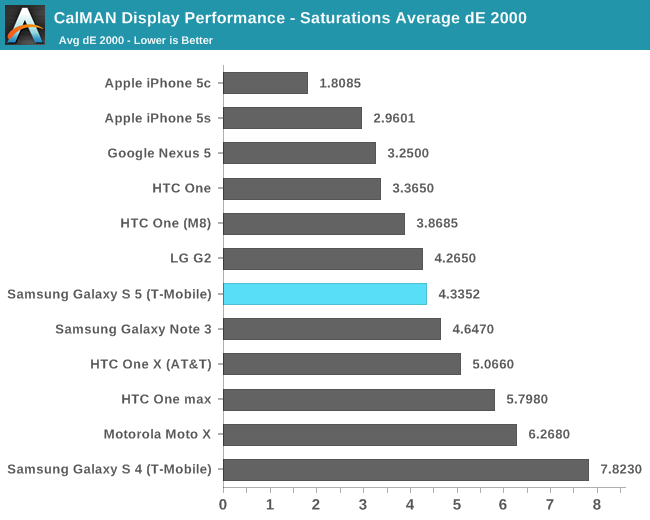
Looking at the saturation sweep, it’s evident that Samsung is now about equivalent to LG in color accuracy for their displays. HTC is barely ahead, with such a small difference that it’s not worth counting. Only Google and Apple have a noticeable lead in this department, a huge improvement from 2013 when Samsung trailed far behind most other competitors in this test.
In the Gretag Macbeth Colorchecker, Samsung continues to hold its position, beating all but Google and Apple. HTC is noticeably behind in this department compared to Samsung, as the One (M8) is horrific in this department compared to even the original HTC One.
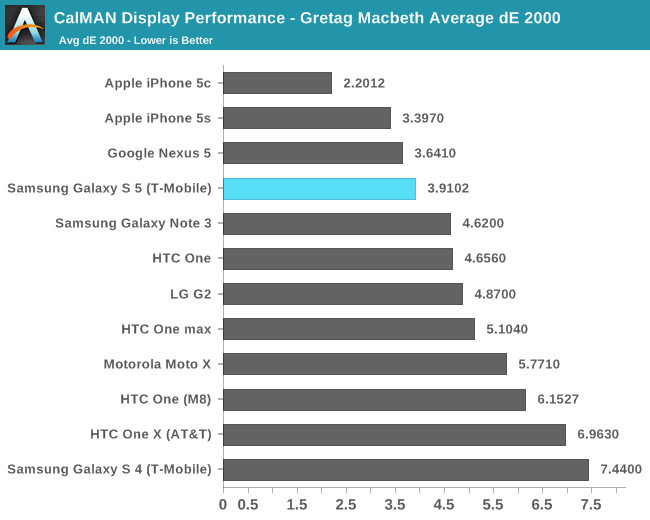
In the contrast department, Samsung continues to dominate, with effectively infinite contrast. Based upon some quick viewing of the display in the darkest room I have in the house, I don’t see any obvious DC bias issues. Unfortunately, I still see some ghosting on the display at low brightness which manifests as a purple trail when scrolling. This seems to be unchanged from the Galaxy S4. The minimum white brightness is around 1.8 nits, which is great for reading at night, as many LCD-screened phones such as the LG G Pro 2 have a minimum white brightness of around 7-12 nits.
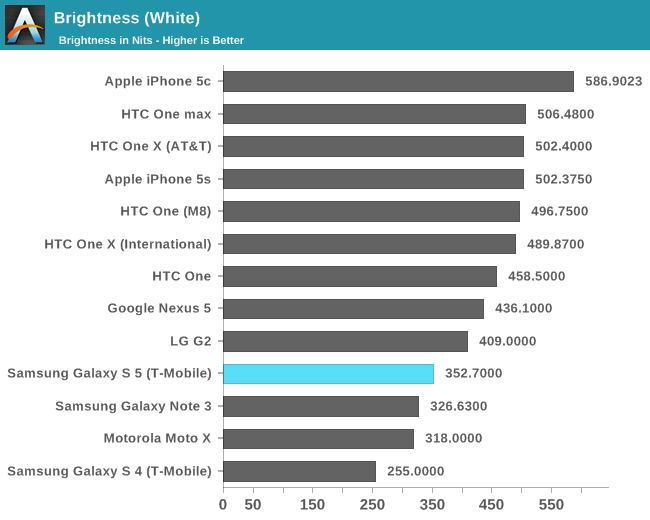
Samsung has also made great gains in the maximum brightness department, which is especially pleasing because for the longest time, AMOLED was noticeably less bright which made it incredibly difficult to read webpages and similar content outdoors. I’m happy to say that this is no longer the case, as the Galaxy S5 now has a display that realistically reaches around 440 nits outdoors with a pure white image, although this requires auto-brightness to be on and will vary with the screen mode. The maximum that is accessible without this daytime boost mode is somewhere around 350 nits.
The problem is the way Samsung has achieved this, something that is shown in the grayscale tests. While Samsung has done a great job in clamping down the white point to around 6504k, grayscale is so noticeably green that not only does CalMAN show this in the measurements, but also casual observation. I can literally see that the grayscale image is not gray, but an off-green. I’m not quite sure how this happened, but I suspect that this was done in an effort to increase peak brightness as even in the bluest display mode, green is still closely tracking with blue.
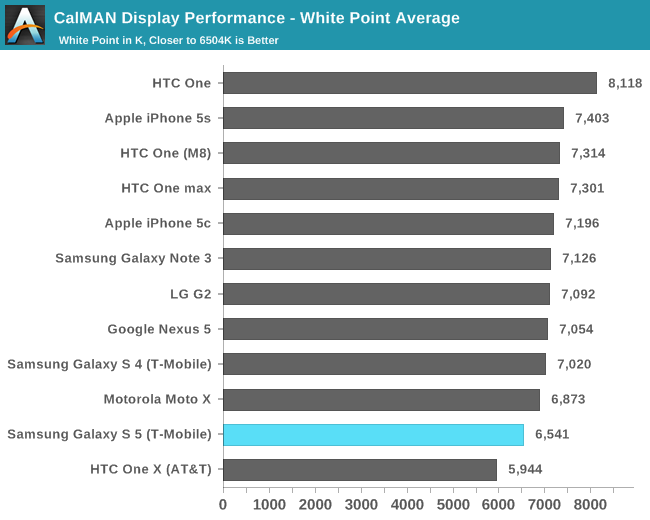
Overall, I’m quite pleased with the display. The AMOLED display in the Galaxy S5 is finally equivalent to LCD displays in color accuracy and peak luminance, areas that LCD used to be the best in. Throw in the incredible contrast that AMOLED has always had and the ability to toggle between wide color gamut and accurate color, and I would say that AMOLED is finally equal, if not slightly better than LCD. With a few more iterations, I wouldn’t be surprised if I were to write that AMOLED is clearly superior to LCD. Of course, there are some issues such as a noticeable green tint to the display in grayscale and Samsung still needs to improve their clamping of gamut to sRGB for Cinema/Movie mode, but none of these issues seriously detract from the viewing experience.


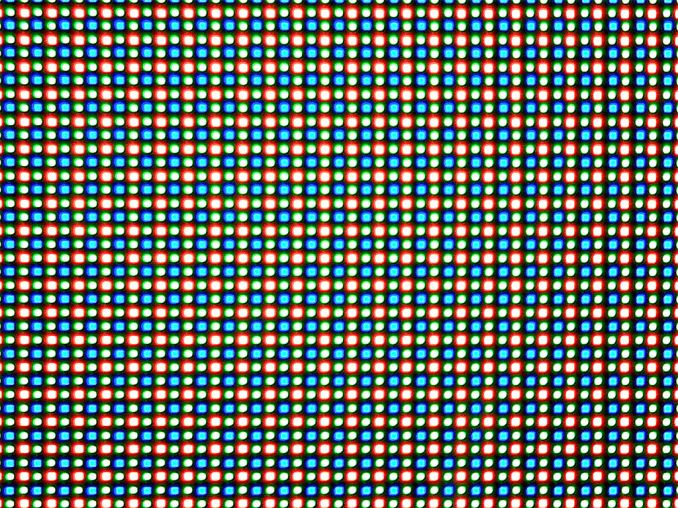












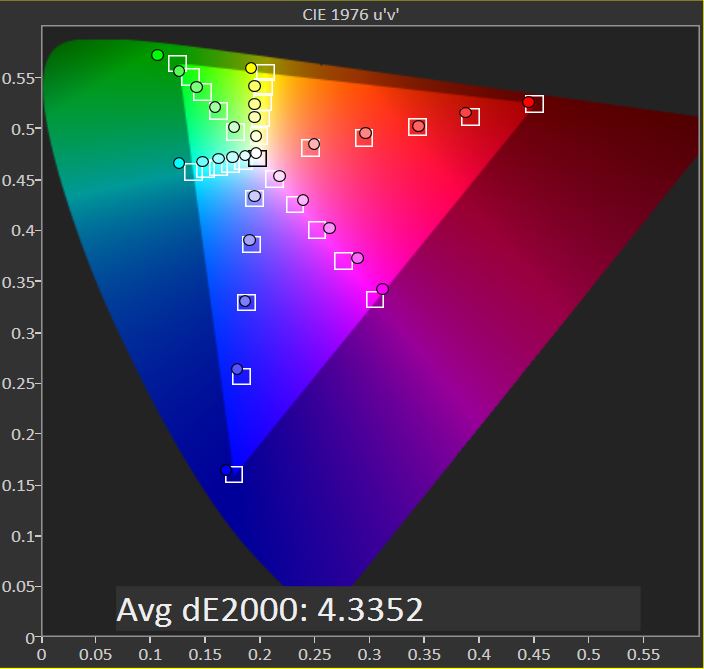
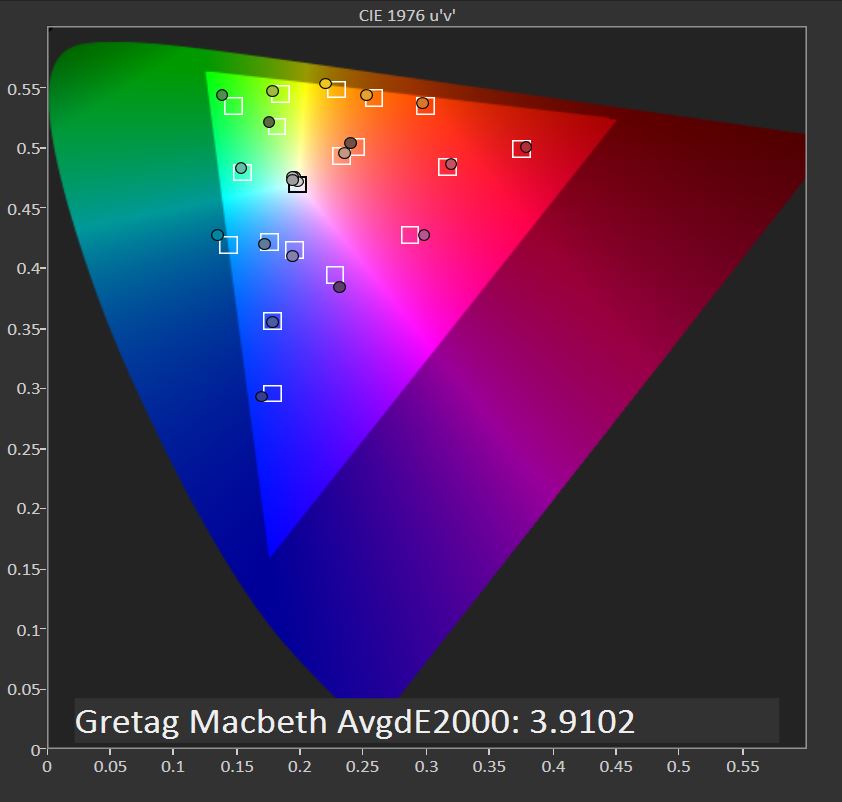









296 Comments
View All Comments
hlovatt - Tuesday, April 8, 2014 - link
Plastic body, pentile, not the brightest display, not the best build quality, not the best feel in the hand, not the best camera, not the best processor, could be the last of the 32 bit top end phones, not the best finger scanner, not the best styling, hard to use one handed - but a high price - seems ho hum to me. (But it does have the most advertising, so maybe they are spending their money wisely :).Ev1lAsh - Wednesday, April 9, 2014 - link
I know its not as important with the quicker shutter speed, but personally I was hoping for OIS (in h/w), as I seem to have very shaky hands judging by some of the videos I've shot over the years..theuglyman0war - Friday, April 25, 2014 - link
2nd this...image stabilization race competition would be nice for the market in general
jabber - Tuesday, April 8, 2014 - link
Actually I'm pleased that we are now at the stage of purely refinement rather than revolutionary features. At least from here on in we should get products that actually work and work well rather than half baked features that are strangely absent from the next version.BoneAT - Tuesday, April 8, 2014 - link
DiplayMate calls S5 screen best mobile display ever, it has awesome battery stats, has great grip, survives huge drops (S5 vs. Tesla Model Sm youtube) some of the best battery stats, IP68 level protection (1h in pool, youtube), excellent photo and incredible 4k video recording quality, fast fluid performance (pity Anand didn't use stock browser which is new SunSpider champ) & the the usual suspects: multi-window, rich camera interface, airview, now battery saver, fingerprint payment & super-charging.Individually you could say it's not the 2nd coming, but all things combined, build, grip, camera, battery, screen, performance, features, it's a bigger leap forward than any Android device since the Note 2.
grayson_carr - Tuesday, April 8, 2014 - link
Based on the data shown here, Display Mate probably received a nice fat check from Samsung. It's a good display, no doubt, but it's far from what DisplayMate portrayed it to be.ltcommanderdata - Tuesday, April 8, 2014 - link
DisplayMate's pre-release unit may have been cherry-picked by Samsung so their results may be accurate for the device given, but may not be representative of every unit.comomolo - Tuesday, April 8, 2014 - link
Or Display Mate might have the better equipment and expertise in -errr...- display calibration technology, which they have been doing for some million years or so and beg to differ with Anand's conclusions?comomolo - Tuesday, April 8, 2014 - link
That's a trully deep argument there... (facepalm). I guess people at Display Mate should now believe Apple is paying Anand, right?grayson_carr - Wednesday, April 9, 2014 - link
Well then. I didn't know that my comments needed to be backed by deep arguments. For one, the reason I'm here is because I've been reading Anandtech for nearly 15 years and know that I can trust them to be competent and objective. I'm admittedly not as familiar with DisplayMate's reviews (though I've known the name for a long time), so I don't know how trustworthy they usually are, but based on my own experience with the Galaxy S5, I do find it a bit surprising that they think it has the best mobile display ever. When compared to my Nexus 5 and my wife's iPhone 5, whites on the GS5 had a green tint, there was banding in some gradients, and there was noticeable smearing when scrolling quickly. So, you're telling me the best mobile display can't even display white properly? My rudimentary findings line up more with Anandtech's findings, and plus I already trusted Anandtech, so yeah, I'm calling BS on DisplayMate's claim. The GS5 has a good display for sure, but after hearing what DisplayMate thought, I was expecting more. I think ltcommanderdata could be on to something. DisplayMate might have received a "special" cherry picked GS5 with a custom calibration or something. I would like them to review a random production unit they buy themselves.